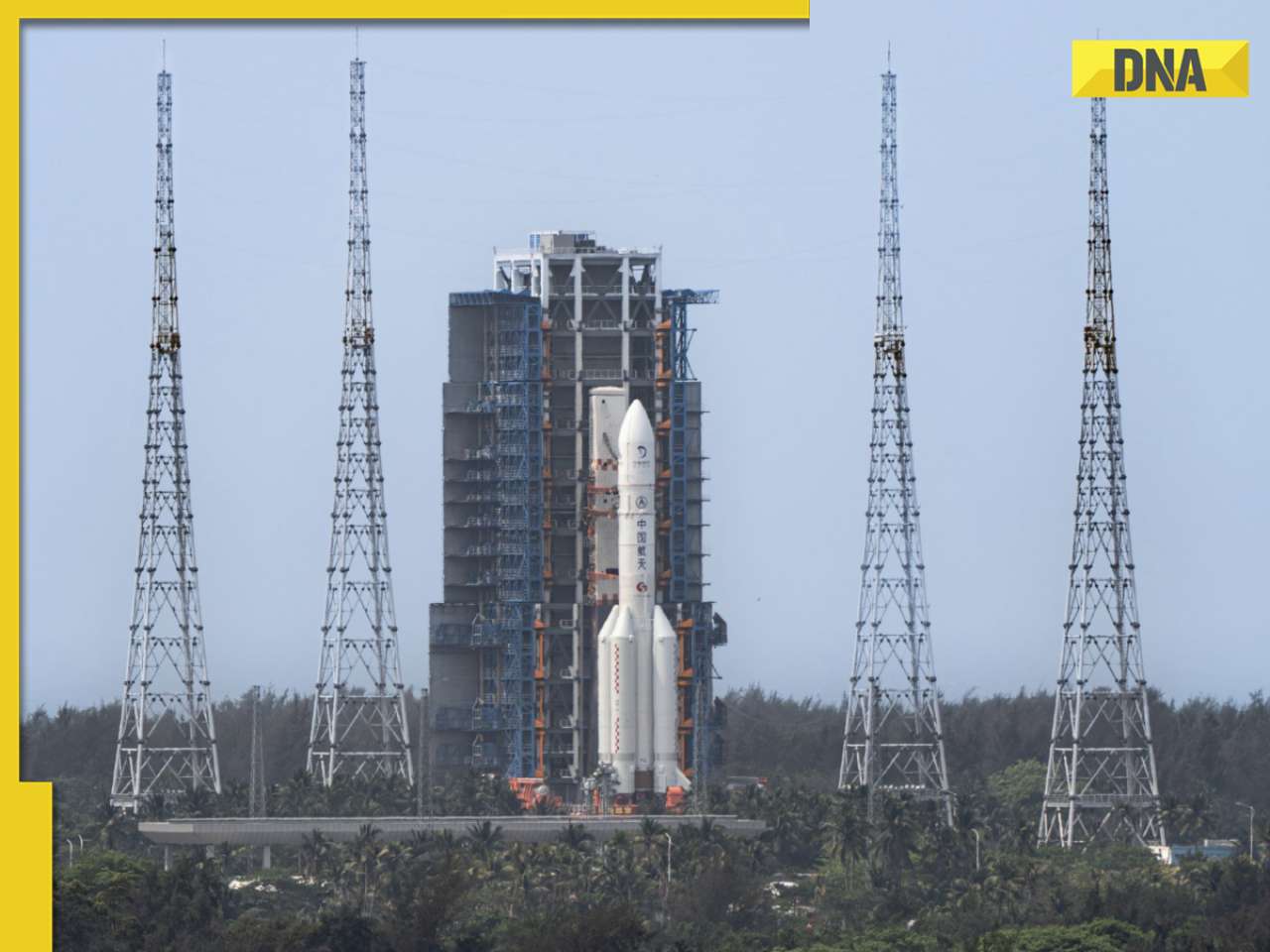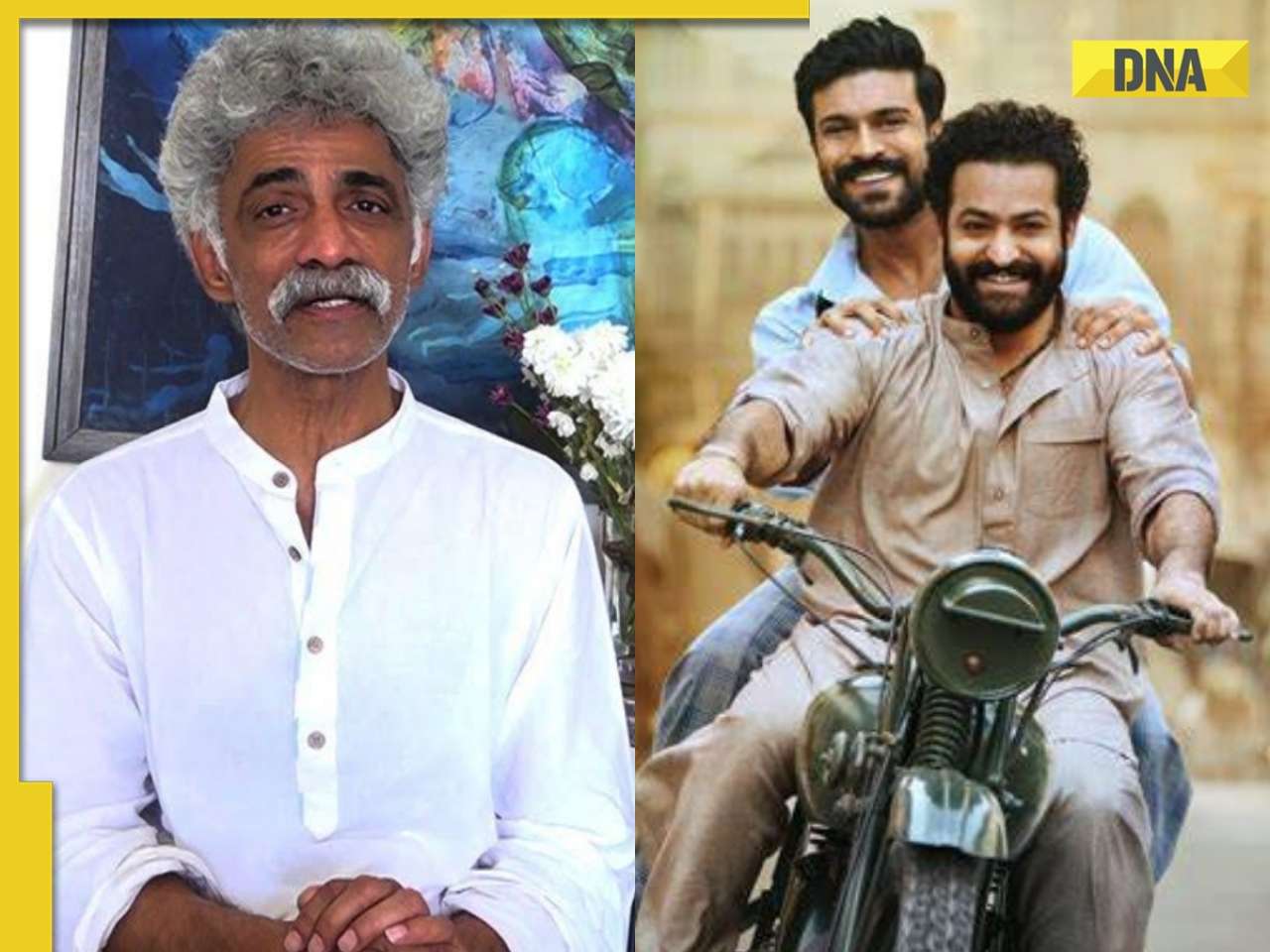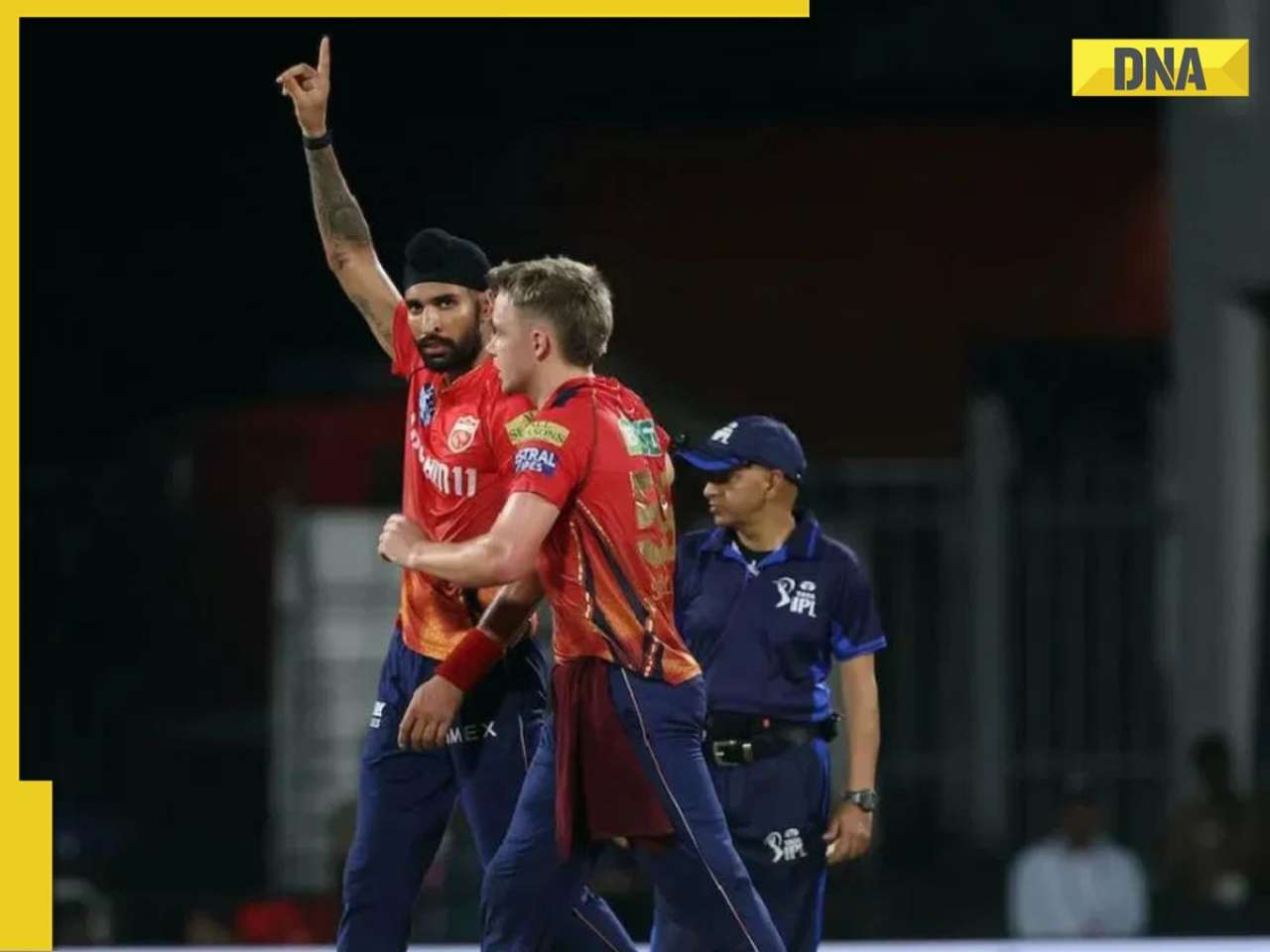Over the next five years, military analysts expect it to spend $40bn on weapons procurement alone, more than its annual armaments budget today.
Armament makers, especially American ones, are eyeing India as a growth partner for the future
NEW DELHI: India is developing a military appetite to match its growing economic power. Over the next five years, military analysts expect it to spend $40bn on weapons procurement alone, more than its annual armaments budget today - upgrading systems as diverse as jet fighters, artillery, submarines and tanks. As a result, India will become one of the largest military markets in the world.
For American contractors, the surge in demand comes just as relations between Washington and New Delhi reach a new level of warmth.
In terms of "potential for growth, India is our top market", said Richard Kirkland, Lockheed Martin's president for South Asia.
But whether US companies can turn that potential into profits will depend on how they finesse the particular challenges of the new market - especially, competition from their Russian counterparts.
The stakes of the contest were underscored this week when the Indian defence ministry called for bids to fill an order for 126 fighter jets, a contract that could be worth $10.2 bn.
Determined to build a domestic arms industry, India needs foreign suppliers to make a sizable portion of any military goods in this country. In the case of the jet fighter contract, the successful bidder must produce goods worth half the contract's value in India. American companies are busily pairing up with locals.
In February, Raytheon and the electronics division of the Indian giant Tata Power signed such an agreement. The same month, Boeing signed an accord with an Indian engineering firm, Larsen & Toubro, to develop new projects.
The Americans' interest in India goes beyond weapons. This country has booming markets in commercial aviation, shipping and infrastructure projects, which means opportunities for logistics and security units of big US contractors.
Walter Doran, president of Raytheon Asia and a former commander of the Navy's Pacific fleet, predicts India may be "one of our largest, if not our largest, growth partner over the next decade or so".
The hefty increase in military spending reflects the country's changing view of itself. India, like "all aspiring nations, is seeking its place on the world's stage", admiral Sureesh Mehta, chief of staff of the Indian Navy, told thousands of white-suited officers at a naval conference in New Delhi in July.
In particular, India is positioning itself as a policeman of nearby waterways. Defence ministry spokesman Sitanshu Kar said, "If you look at the rim from west Asia to Asia-Pacific, that entire area accounts for over 70 per cent of the traffic of petroleum products for the whole world. We have a role to play to ensure these sea lanes are secure."
American carrier Trenton, which the Indian Navy bought and renamed Jalashva, can, for example, carry 450 soldiers and half-a-dozen helicopters, and be used to evacuate Indian nationals, deliver aid or intervene in conflict areas.
Yet India is virgin territory for American armament makers. Decades of cold war-era distrust, when India aligned itself much of the time with the Soviet Union, followed by sanctions president Clinton imposed after India tested nuclear weapons in 1998, made India a sort of no-go area for American companies.
Under the Bush administration, sanctions have been lifted and military ties have deepened. In July, the two governments announced a commercial nuclear energy agreement. Under the accord, the US will share nuclear technology with India, including fuel. The deal requires a radical, India-specific exception to American law and underscores the Bush administration's commitment, made two years ago, to help India become "a major world power".
But many arms industry analysts say winning big orders in India will still be a challenge for Americans. In many cases, companies will be competing directly against India's traditional supplier, Russia, which has manufacturing agreements in place and is still the largest supplier.
Though relations unraveled after the disintegration of the Soviet Union, they were repaired in the late '90s and the two countries are negotiating some $10 billion in contracts, including an Indian air defense system.
Nonetheless, Americans are winning some deals. Lockheed Martin is in final talks to sell six C-130J cargo planes for $1 billion.
![submenu-img]() Big update on Pakistan's first-ever Moon mission and it has this China connection...
Big update on Pakistan's first-ever Moon mission and it has this China connection...![submenu-img]() 2024 Maruti Suzuki Swift officially teased ahead of launch, bookings open at price of Rs…
2024 Maruti Suzuki Swift officially teased ahead of launch, bookings open at price of Rs…![submenu-img]() 'Kyun bhai kyun?': Sheezan Khan slams actors in Sanjay Leela Bhansali's Heeramandi, says 'nobody could...'
'Kyun bhai kyun?': Sheezan Khan slams actors in Sanjay Leela Bhansali's Heeramandi, says 'nobody could...'![submenu-img]() Meet Jai Anmol, his father had net worth of over Rs 183000 crore, he is Mukesh Ambani’s…
Meet Jai Anmol, his father had net worth of over Rs 183000 crore, he is Mukesh Ambani’s…![submenu-img]() Shooting victim in California not gangster Goldy Brar, accused of Sidhu Moosewala’s murder, confirm US police
Shooting victim in California not gangster Goldy Brar, accused of Sidhu Moosewala’s murder, confirm US police![submenu-img]() DNA Verified: Is CAA an anti-Muslim law? Centre terms news report as 'misleading'
DNA Verified: Is CAA an anti-Muslim law? Centre terms news report as 'misleading'![submenu-img]() DNA Verified: Lok Sabha Elections 2024 to be held on April 19? Know truth behind viral message
DNA Verified: Lok Sabha Elections 2024 to be held on April 19? Know truth behind viral message![submenu-img]() DNA Verified: Modi govt giving students free laptops under 'One Student One Laptop' scheme? Know truth here
DNA Verified: Modi govt giving students free laptops under 'One Student One Laptop' scheme? Know truth here![submenu-img]() DNA Verified: Shah Rukh Khan denies reports of his role in release of India's naval officers from Qatar
DNA Verified: Shah Rukh Khan denies reports of his role in release of India's naval officers from Qatar![submenu-img]() DNA Verified: Is govt providing Rs 1.6 lakh benefit to girls under PM Ladli Laxmi Yojana? Know truth
DNA Verified: Is govt providing Rs 1.6 lakh benefit to girls under PM Ladli Laxmi Yojana? Know truth![submenu-img]() Remember Heyy Babyy's cute 'Angel' Juanna Sanghvi? 20 year-old looks unrecognisable now, fans say 'her comeback will...'
Remember Heyy Babyy's cute 'Angel' Juanna Sanghvi? 20 year-old looks unrecognisable now, fans say 'her comeback will...'![submenu-img]() In pics: Arti Singh stuns in red lehenga as she ties the knot with beau Dipak Chauhan in dreamy wedding
In pics: Arti Singh stuns in red lehenga as she ties the knot with beau Dipak Chauhan in dreamy wedding![submenu-img]() Actors who died due to cosmetic surgeries
Actors who died due to cosmetic surgeries![submenu-img]() See inside pics: Malayalam star Aparna Das' dreamy wedding with Manjummel Boys actor Deepak Parambol
See inside pics: Malayalam star Aparna Das' dreamy wedding with Manjummel Boys actor Deepak Parambol ![submenu-img]() In pics: Salman Khan, Alia Bhatt, Rekha, Neetu Kapoor attend grand premiere of Sanjay Leela Bhansali's Heeramandi
In pics: Salman Khan, Alia Bhatt, Rekha, Neetu Kapoor attend grand premiere of Sanjay Leela Bhansali's Heeramandi![submenu-img]() DNA Explainer: Why Harvey Weinstein's rape conviction was overturned, will beleaguered Hollywood mogul get out of jail?
DNA Explainer: Why Harvey Weinstein's rape conviction was overturned, will beleaguered Hollywood mogul get out of jail?![submenu-img]() What is inheritance tax?
What is inheritance tax?![submenu-img]() DNA Explainer: What is cloud seeding which is blamed for wreaking havoc in Dubai?
DNA Explainer: What is cloud seeding which is blamed for wreaking havoc in Dubai?![submenu-img]() DNA Explainer: What is Israel's Arrow-3 defence system used to intercept Iran's missile attack?
DNA Explainer: What is Israel's Arrow-3 defence system used to intercept Iran's missile attack?![submenu-img]() DNA Explainer: How Iranian projectiles failed to breach iron-clad Israeli air defence
DNA Explainer: How Iranian projectiles failed to breach iron-clad Israeli air defence![submenu-img]() 'Kyun bhai kyun?': Sheezan Khan slams actors in Sanjay Leela Bhansali's Heeramandi, says 'nobody could...'
'Kyun bhai kyun?': Sheezan Khan slams actors in Sanjay Leela Bhansali's Heeramandi, says 'nobody could...'![submenu-img]() Meet actress who once competed with Aishwarya Rai on her mother's insistence, became single mother at 24, she is now..
Meet actress who once competed with Aishwarya Rai on her mother's insistence, became single mother at 24, she is now..![submenu-img]() Makarand Deshpande says his scenes were cut in SS Rajamouli’s RRR: ‘It became difficult for…’
Makarand Deshpande says his scenes were cut in SS Rajamouli’s RRR: ‘It became difficult for…’![submenu-img]() Meet 70s' most daring actress, who created controversy with nude scenes, was rumoured to be dating Ratan Tata, is now...
Meet 70s' most daring actress, who created controversy with nude scenes, was rumoured to be dating Ratan Tata, is now...![submenu-img]() Meet superstar’s sister, who debuted at 57, worked with SRK, Akshay, Ajay Devgn; her films earned over Rs 1600 crore
Meet superstar’s sister, who debuted at 57, worked with SRK, Akshay, Ajay Devgn; her films earned over Rs 1600 crore![submenu-img]() IPL 2024: Spinners dominate as Punjab Kings beat Chennai Super Kings by 7 wickets
IPL 2024: Spinners dominate as Punjab Kings beat Chennai Super Kings by 7 wickets![submenu-img]() Australia T20 World Cup 2024 squad: Mitchell Marsh named captain, Steve Smith misses out, check full list here
Australia T20 World Cup 2024 squad: Mitchell Marsh named captain, Steve Smith misses out, check full list here![submenu-img]() SRH vs RR, IPL 2024: Predicted playing XI, live streaming details, weather and pitch report
SRH vs RR, IPL 2024: Predicted playing XI, live streaming details, weather and pitch report![submenu-img]() SRH vs RR IPL 2024 Dream11 prediction: Fantasy cricket tips for Sunrisers Hyderabad vs Rajasthan Royals
SRH vs RR IPL 2024 Dream11 prediction: Fantasy cricket tips for Sunrisers Hyderabad vs Rajasthan Royals ![submenu-img]() IPL 2024: Marcus Stoinis, Mohsin Khan power Lucknow Super Giants to 4-wicket win over Mumbai Indians
IPL 2024: Marcus Stoinis, Mohsin Khan power Lucknow Super Giants to 4-wicket win over Mumbai Indians![submenu-img]() Viral video: Man's 'peek-a-boo' moment with tiger sends shockwaves online, watch
Viral video: Man's 'peek-a-boo' moment with tiger sends shockwaves online, watch![submenu-img]() Viral video: Desi woman's sizzling dance to Jacqueline Fernandez’s ‘Yimmy Yimmy’ burns internet, watch
Viral video: Desi woman's sizzling dance to Jacqueline Fernandez’s ‘Yimmy Yimmy’ burns internet, watch![submenu-img]() Viral video: Men turn car into mobile swimming pool, internet reacts
Viral video: Men turn car into mobile swimming pool, internet reacts![submenu-img]() Meet Youtuber Dhruv Rathee's wife Julie, know viral claims about her and how did the two meet
Meet Youtuber Dhruv Rathee's wife Julie, know viral claims about her and how did the two meet![submenu-img]() Viral video of baby gorilla throwing tantrum in front of mother will cure your midweek blues, watch
Viral video of baby gorilla throwing tantrum in front of mother will cure your midweek blues, watch













































)
)
)
)
)
)